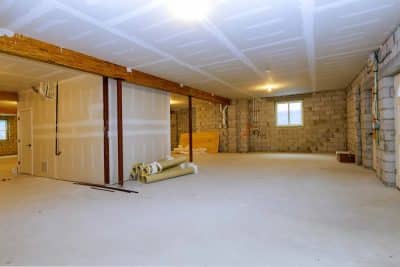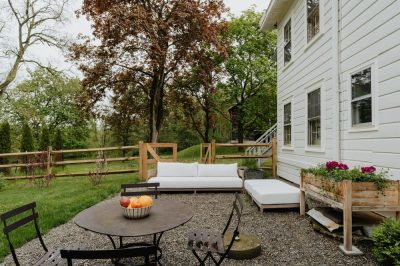
When it comes to selling your home, first impressions matter immensely. In today’s market, the first impression often comes from your listing photos. High-quality photos can attract potential buyers, leading to quicker sales and higher offers. Conversely, poor photos can make your property sit on the market longer and even sell for less.
Using AI real estate photo editing can help enhance your images, but it’s crucial to avoid common listing photo mistakes that can turn potential buyers away. Below are some of these mistakes:
1. Poor Lighting
Lighting can make or break a photo. Poor lighting can cause rooms to look dark, small, and uninviting. Natural light is your best friend when photographing your home. Aim to take photos during the day when your rooms are filled with natural light. Maximize natural light by drawing back curtains and blinds. Should natural illumination prove insufficient, illuminate the space thoroughly with overhead lighting and enhance brightness with supplemental light sources such as lamps or professional photographic lighting gear. Good lighting highlights your home’s best features and makes spaces look larger and more welcoming.
2. Cluttered Spaces
A cluttered home can be a major turn-off for potential buyers. Clutter makes spaces look smaller and distracts from the home’s features. Before taking photos, take the time to declutter each room. Remove personal items such as family photos, knick-knacks, and any unnecessary furniture. The goal is to create a clean, organized space that allows buyers to imagine their own belongings in the home. A decluttered home looks more spacious and appealing in photos, increasing its attractiveness to potential buyers.
3. Lack of Staging
Staging your home is essential for creating appealing listing photos. Unstaged homes can appear bland and uninviting. Proper staging helps potential buyers visualize the possibilities of each room. This doesn’t necessarily mean you need to hire a professional stager. Simple touches like arranging furniture to maximize space, adding tasteful decor, and ensuring each room has a defined purpose can make a big difference. Staging highlights your home’s potential and makes it stand out in listing photos.
4. Low-Resolution Images
In the age of high-definition screens, low-resolution images simply don’t cut it. Blurry or pixelated photos can make your listing look unprofessional and deter potential buyers. Always use a high-quality camera to take your listing photos. If you don’t have access to a professional camera, consider hiring a professional photographer specializing in real estate. Ensure your camera settings are adjusted to the highest resolution. High-resolution images are clear and sharp and make your home look its best.
5. Ignoring Exterior Shots
The exterior of your home is the first thing potential buyers see, both in listing photos and in person. Ignoring exterior shots can be a costly mistake. Your home’s curb appeal is crucial for making a good first impression. Make sure to include several exterior shots from different angles. Highlight features such as landscaping, the front door, and any unique architectural elements. If your home has a backyard, patio, or other outdoor spaces, be sure to include photos of these areas as well. A well-presented exterior invites buyers to explore further.
6. Misleading Photos
While showing your home in the best possible light is important, it’s equally important to be honest in your presentation. Misleading photos that use deceptive angles or excessive editing can lead to disappointment during in-person viewings. This can erode trust and potentially derail a sale. Use photo editing tools to enhance photos, but ensure they still accurately represent your home. Honest photos build trust with potential buyers and set realistic expectations.
7. Overlooking Key Features
Every home has unique features that set it apart from others. Failing to highlight these features in your listing photos can be a missed opportunity. Think about what makes your home special. Is it a newly renovated kitchen? A spacious master suite? A beautiful fireplace? Make sure these features are prominently showcased in your photos. Highlighting key features helps your home stand out and can attract buyers specifically looking for those attributes.
8. Too Few Photos
When it comes to listing photos, more is usually better. Too few photos can leave potential buyers with unanswered questions and may cause them to skip over your listing. Aim to include at least 20-30 photos covering all your home’s important areas. Include photos of each room, key features, and multiple angles of the exterior. A comprehensive set of photos provides a complete picture of your home, giving buyers the information they need to decide if they want to see it in person.
9. Poor Composition
Good composition is essential for creating attractive photos. Poorly composed photos can make your home look less appealing and fail to capture its best features. Learn some basic photography composition techniques to improve your listing photos. The rule of thirds, where you divide your image into thirds horizontally and vertically and place key elements along these lines, can help create balanced and visually pleasing photos. Pay attention to angles and framing, and try to capture each room’s best features. Good composition makes your home look more inviting and professional.
10. Ignoring Seasonal Appeal
The time of year can significantly affect the appeal of your listing photos. Photos taken in different seasons can highlight your home’s versatility and appeal throughout the year. Update your listing photos to reflect the current season. In spring and summer, focus on lush gardens and outdoor spaces. In fall, highlight warm, cozy interiors. In winter, showcase any festive decorations and the comfort of indoor spaces. Seasonal photos can make your home look inviting no matter the time of year, attracting buyers who can imagine living there in every season.
Conclusion
Listing photos is one of the most important aspects of selling your home. They create the first impression potential buyers will have of your property. By avoiding these common mistakes, you can ensure your photos present your home in the best possible light, attracting more interest and ultimately leading to a successful sale.
Remember, high-quality, well-composed photos can significantly affect how your home is perceived. Avoid these ten listing photo mistakes, and you’ll be well on your way to creating compelling listing photos that help sell your home quickly and for the best possible price.









